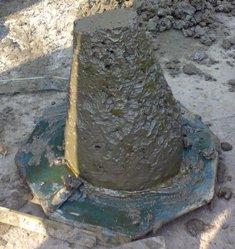* Asian currencies slide as euro zone woes sap risk appetite
* Sing dollar hits 2-mth low, focus on MAS Oct policy decision
* Analysts see rising chance of MAS reducing appreciation slope
* Rupee hits fresh 1-yr low, rupiah touches 2-mth trough (Updates text, prices)
By Masayuki Kitano
SINGAPORE, Sept 12 (Reuters) - The Singapore dollar hit its lowest level in more than two months on Monday, hurt by investor jitters over the euro zone's debt crisis and growing market speculation that Singapore's central bank may ease its monetary policy next month.
Fears that the euro zone's support for Greece is wobbling dampened risk appetite and helped spur a sell-off in Asian currencies, dragging the Indian rupee down to a fresh one-year low and the Indonesian rupiah to a two-month trough.
The U.S. dollar's rally against the euro over the past week has had knock-on effects on Asian currencies, which have also been pressured by worries that Asian economies may increasingly feel the pinch from a slowdown in developed economies.
Chow Penn Nee, an economist for United Overseas Bank in Singapore, said she believes there's increased risk the Monetary Authority of Singapore "could ease monetary policy to one of a more gradual appreciation."
UOB's current forecast is for the MAS to keep monetary policy unchanged in October, when it issues a statement, but her bank thinks the probability of easing is increasing, Chow said.
"The heightened uncertainties in the global environment increase chances of a technical recession in Singapore," she said.
The Singapore dollar could extend its losses in the near term if forthcoming data comes in weak and causes a further shift in market expectations toward the MAS easing in October, rather than keeping policy unchanged, she added.
The Singapore dollar fell to as low as 1.2358 to the U.S. dollar , the Singapore currency's lowest level since late June.
One possible resistance for USD/SGD lies at 1.2448, a peak hit in late June and the next significant peak on charts. Higher up, the U.S. dollar's 200-day moving average comes in at 1.2507.
The greenback has risen 2.2 percent in the past three days, on track for its biggest three-day percentage gain since May 2010, when worries about Greece's sovereign debt crisis roiled financial markets.
At its last policy decision in April, MAS tightened monetary policy by re-centering its exchange rate policy band upwards, though to below the prevailing nominal effective exchange rate. The central bank left the slope and width of the band unchanged.
SINGAPORE DOLLAR
Nomura's FX strategists recommend taking a short Singapore dollar position over a period of two months, against a currency basket consisting of the U.S. dollar, Malaysian ringgit, Chinese yuan, Japanese yen, the euro, Indonesian rupiah, South Korean won and the Taiwan dollar.
The analysts said they saw downside risk for the Singapore dollar's nominal effective exchange rate, due to an increased risk of a policy shift from the central bank in October.
"We currently think the authorities are more likely to reduce the slope of SGD NEER appreciation (around 40 percent probability) rather than make an outright shift to neutral (35 percent)," the analysts said, referring to the Singapore dollar's nominal effective exchange rate.
"But the risk of a shift to neutral will rise if the global economic data continue to deteriorate over the next month," the analysts said in a research note.
"Given our belief that the broad market (especially real money) is still long SGD, we see a risk of a large negative SGD reaction to a shift towards/to neutral," they said.
The Nomura analysts added that they expect MAS to keep the width of the policy band unchanged in October.
MALAYSIAN RINGGIT
The Malaysian ringgit is testing support at its 200-day moving average at 3.0283 . If dollar/ringgit closes above the 200-day moving average, it would be for the first time since July 2009 and could set the dollar up for further gains.
Above the 200-day moving average, one possible resistance level for the dollar lies at 3.0470, an intraday high hit in early August and the next significant peak on charts.
INDIAN RUPEE
The dollar hit a fresh one-year high of 46.99 to the rupee , with the dollar extending its gains after data showed that India's industrial output rose at a sharply lower-than-expected 3.3 percent pace from a year earlier.
The median forecast in a Reuters poll was for an annual rise of 6.2 percent.
INDONESIAN RUPIAH
The rupiah dipped to 8,618 versus the dollar , its lowest level in more than two months, despite continued intervention from the central bank at staggered levels above 8,600.
Banks are not updating prices on their screens for fear of inviting phone calls and checks from the central bank, traders said.
A dealer for a European bank in Jakarta said the rupiah's weakness on Monday was partly due to overseas investors pulling money out of Indonesian bonds.
CURRENCIES VS U.S. DOLLAR
Change on the day at 0619 GMT Currency Latest bid Previous day Pct Move Japan yen 77.01 77.61 +0.78 Sing dlr 1.2340 1.2294 -0.37 Taiwan dlr 29.205 29.221 +0.05 Korean won 1077.00 1077.30 +0.03 Baht 30.11 30.05 -0.20 Peso 42.71 42.49 -0.52 Rupiah 8600.00 8565.00 -0.41 Rupee 46.96 46.56 -0.86 Ringgit 3.0270 3.0005 -0.88 Yuan 6.3880 6.3882 +0.00
Change so far in 2011 Currency Latest bid End prev year Pct Move Japan yen 77.01 81.15 +5.38 Sing dlr 1.2340 1.2820 +3.89 Taiwan dlr 29.205 30.368 +3.98 Korean won 1077.00 1134.80 +5.37 Baht 30.11 30.14 +0.10 Peso 42.71 43.84 +2.65 Rupiah 8600.00 9005.00 +4.71 Rupee 46.96 44.70 -4.81 Ringgit 3.0270 3.0820 +1.82 Yuan 6.3880 6.5897 +3.16
















